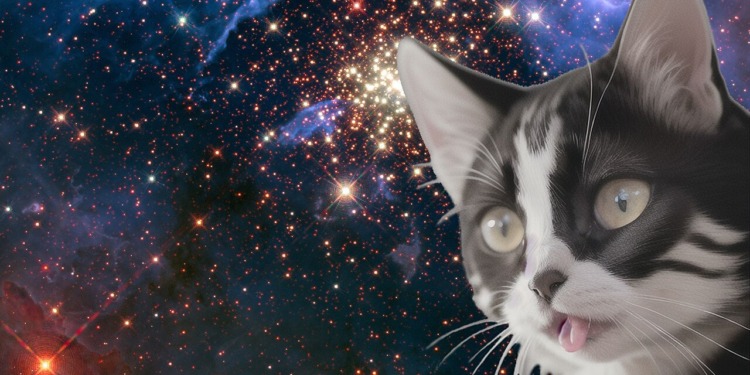On December 11, 2023, Taters, a cat, made its broadcast debut in a 15-second video in which it chases a laser. But this isn’t just any cat video, even if it looks like any other cat video. This cat video was streamed by NASA from deep space, 31 million kilometers (19 million miles) away from Earth, back to our planet.
It was streamed using NASA’s new laser technology, in ultra high-definition.
“Despite transmitting from millions of miles away, it was able to send the video faster than most broadband internet connections,” said Ryan Rogalin, NASA Jet Propulsion Laboratory’s electronics lead.
Is Taters the cat in space? How NASA streamed the video
Taters still has its paws safely planted on Earth, where the video was shot. After making the video, NASA uploaded it to a spacecraft as part of the Psyche mission, launched into space on October 13. The video was streamed from the craft back to Earth on December 11.
On Earth, Palomar Observatory’s Hale telescope received the video and transmitted it to NASA’s Jet Propulsion Laboratory, the unit managing mission Psyche, where it was streamed in real time.
So why send a cat video through space? Actually, why send a video between space and Earth in the first place?
Why did NASA send a cat video from space?
The cat video is just a video. It could have been a dog trying to jump on a sofa or a TikTok dance, and nothing would have changed.
Taters and his owner, NASA’s visual strategist Joby Harris, are part of the Deep Space Optical Communications mission. In this first experiment, the team managed to transmit a record-setting amount of data over a record distance of 31 million kilometers. This is about 80 times the distance between the Moon and Earth.
Related Articles: 5 Sustainable Ways to Care For Your Cats | The Sky’s Not the Limit for One Health on Earth | Life Beyond Earth? NASA Finds Potential Signs
There might have been two reasons for going with a cat video. The first is that, as the saying goes, the internet loves cats. And it probably worked, considering how much the internet is talking about it.
The second reason is legacy. Some of the first test broadcast television equipment, during the 1920s, were made with a Felix the Cat statuette. We don’t know if Harris or someone else was thinking of those first historic transmissions when they went to grab Taters, but it’s nice to think that, nearly 100 years later, we chose cats again.
The technology: How it works and what it’s for
Sure, the cat is just the subject of the experiment, but why send a video through space in the first place?
Now, we know what you’re thinking. But it’s not aliens. The use case for this technology is instead lighting fast communication during space missions. Space missions still use radio-based systems to transmit data back and forth between Earth and space. This new laser system might make transmission 10 to 100 times faster.
The video was sent to NASA from the Psyche mission, a satellite flying towards Mars and Jupiter. Taters was only the first of a series of experiments that will take place during the satellite’s voyage.
When Psyche sent the now-famous cat video, it was 19 million miles from Earth. A long way from Mars, which, on average, sits at about 140 million miles from Earth. Experiments will continue until Psyche reaches the distance of Mars, which is expected sometime in mid-2024.
Editor’s Note: The opinions expressed here by the authors are their own, not those of Impakter.com — In the Featured Photo: A cat photoshopped on a picture of space. Featured Photo Credit: Asanagi.










